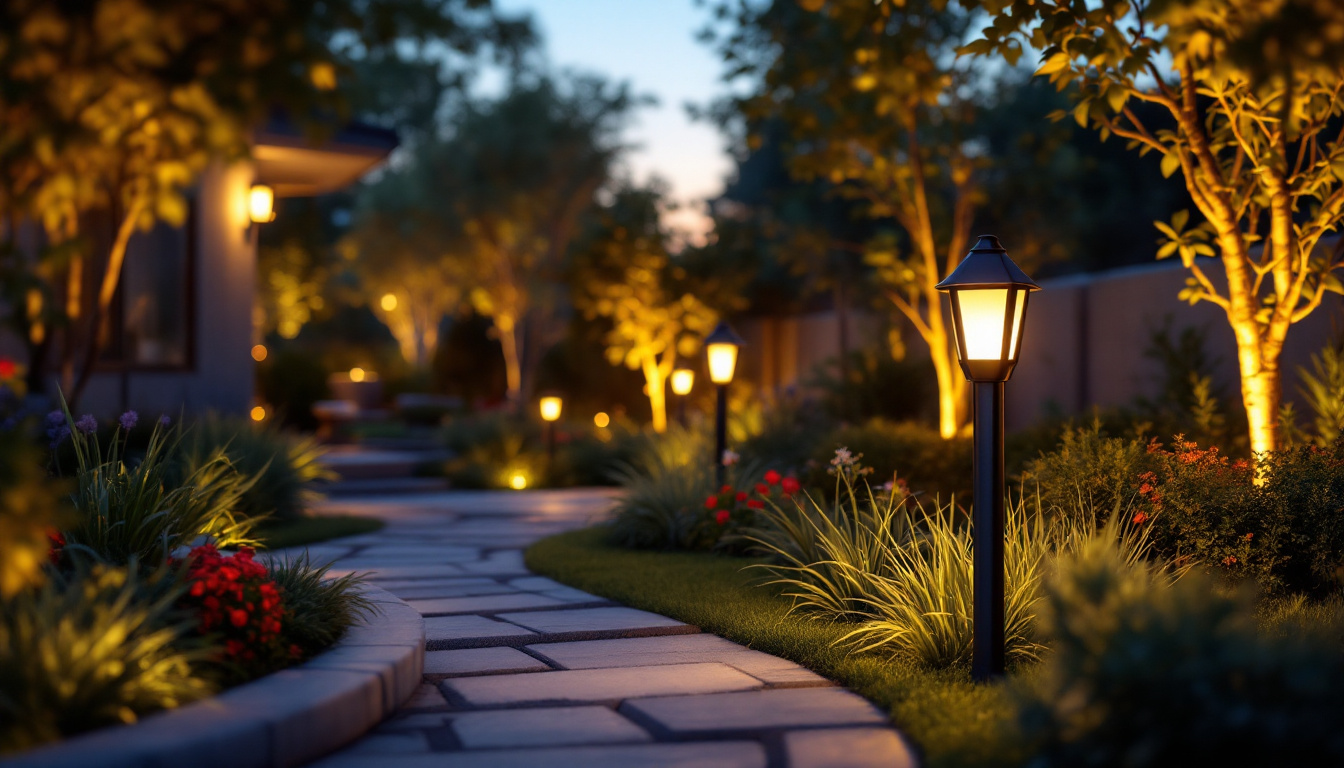
In the evolving landscape of lighting solutions, covered LED lights have emerged as a vital component for lighting contractors. The shift towards energy-efficient lighting has not only transformed the way spaces are illuminated but has also introduced new considerations for contractors. Understanding the significance of covered LED lights can enhance project outcomes, improve client satisfaction, and ultimately drive business success.
Covered LED lights are designed with a protective cover that shields the LED components from external elements while ensuring optimal light output. This design feature is crucial for various applications, including residential, commercial, and industrial settings. The cover can be made from different materials, such as polycarbonate or glass, which can influence the light’s performance and durability. Polycarbonate covers are often favored for their high impact resistance and lightweight properties, making them ideal for environments where durability is paramount. On the other hand, glass covers can provide a more aesthetically pleasing finish and are often used in decorative lighting applications.
There are several types of covered LED lights available on the market, each suited for specific applications. Common types include:
Incorporating covered LED lights into projects offers numerous advantages that can enhance the overall quality of lighting solutions. Some of the key benefits include:
Moreover, covered LED lights often come with features such as dimming capabilities and smart technology integration, allowing users to customize their lighting experience. This adaptability not only enhances the functionality of the space but also contributes to energy savings by allowing users to adjust light levels based on specific needs or preferences. Additionally, many covered LED lights are designed with advanced thermal management systems, which help maintain optimal operating temperatures, further extending their lifespan and performance.
For lighting contractors, understanding compliance with industry standards is crucial when selecting and installing covered LED lights. Adhering to regulations ensures safety, performance, and reliability in lighting solutions. Moreover, compliance not only protects the end-users but also safeguards the contractor’s reputation and business integrity, fostering trust in their services.
Covered LED lights must meet specific regulatory standards to ensure they are safe for use. These standards may include:
In addition to these certifications, compliance with the International Electrotechnical Commission (IEC) standards can further enhance the credibility of LED lighting products. The IEC standards focus on the safety and performance of electrical equipment, ensuring that lighting solutions are not only efficient but also reliable under various operating conditions. This level of compliance can be a significant selling point for contractors looking to differentiate themselves in a competitive market.
In addition to national standards, local building codes and regulations may impose additional requirements for lighting installations. Contractors must be aware of these codes to avoid potential fines or project delays. Familiarity with local regulations can also enhance a contractor’s reputation as a knowledgeable and reliable professional.
Furthermore, staying updated with the latest changes in local codes is essential, as municipalities often revise their regulations to reflect advancements in technology and safety practices. Engaging with local building authorities and participating in workshops can provide contractors with valuable insights into these updates. By proactively addressing these requirements, contractors can ensure that their installations not only comply with current laws but also anticipate future trends, positioning themselves as leaders in the industry.
Proper installation is essential for maximizing the benefits of covered LED lights. Lighting contractors should consider several factors to ensure successful implementation.
Determining the optimal placement and spacing of covered LED lights is crucial for achieving even illumination. Factors such as the height of the ceiling, the purpose of the space, and the desired light levels all play a role in this decision. Conducting a lighting audit can help identify the best layout for the project.
Covered LED lights often require specific wiring configurations to operate efficiently. Contractors should ensure that the existing electrical infrastructure can support the new fixtures. This may involve upgrading circuits or installing new wiring to accommodate the increased load. Proper electrical work not only ensures safety but also enhances the performance of the lighting system.
Educating clients about the benefits and features of covered LED lights is a vital aspect of the contractor-client relationship. Clear communication can help clients make informed decisions and appreciate the value of their investment.
One of the most compelling arguments for choosing covered LED lights is the potential for energy savings. Contractors should provide clients with data on how much they can expect to save on energy bills over time. Presenting case studies or testimonials from previous projects can further reinforce this message.
Clients often overlook the importance of longevity and maintenance when selecting lighting solutions. By explaining that covered LED lights have a longer lifespan and require less frequent replacement, contractors can help clients understand the long-term benefits. This can lead to increased satisfaction and repeat business.
The lighting industry is continuously evolving, with trends influencing the adoption of covered LED lights. Staying informed about these trends can help contractors remain competitive and meet client expectations.
As smart technology becomes more prevalent, integrating covered LED lights with smart systems is an emerging trend. This allows for enhanced control over lighting, including dimming, scheduling, and remote access. Contractors should familiarize themselves with smart lighting options to offer clients innovative solutions that enhance convenience and energy efficiency.
Design plays a significant role in lighting choices, and covered LED lights are no exception. Many manufacturers are now offering fixtures that blend functionality with aesthetic appeal. Contractors should keep an eye on design trends to recommend stylish options that meet clients’ needs while maintaining performance.
While covered LED lights offer numerous benefits, contractors may encounter challenges during installation and project execution. Identifying these challenges and developing solutions is essential for maintaining project efficiency.
Supply chain disruptions can impact the availability of covered LED lights, leading to project delays. Contractors should establish strong relationships with suppliers and stay informed about inventory levels to mitigate this risk. Additionally, exploring alternative products can provide backup options when specific fixtures are unavailable.
As technology evolves, ongoing training and skill development are crucial for contractors. Investing in training programs can enhance technical knowledge and ensure that teams are equipped to handle new products and installation techniques. This not only improves project outcomes but also boosts contractor credibility.
The future of covered LED lights appears promising, with continued advancements in technology and design. As energy efficiency becomes increasingly important, the demand for these lighting solutions is expected to grow.
Emerging technologies, such as tunable white lighting and advanced control systems, are set to revolutionize the way covered LED lights are used. These innovations can enhance user experience and provide greater flexibility in lighting design. Contractors should stay abreast of these developments to offer cutting-edge solutions to their clients.
As sustainability becomes a focal point for many industries, the lighting sector is no exception. Covered LED lights are inherently more environmentally friendly than traditional options, but further innovations aimed at reducing their carbon footprint are likely to emerge. Contractors who prioritize eco-friendly solutions will not only meet client demands but also contribute to a more sustainable future.
Covered LED lights represent a significant advancement in lighting technology, offering numerous benefits for contractors and clients alike. By understanding the importance of these fixtures, staying informed about industry standards, and effectively communicating with clients, lighting contractors can position themselves as leaders in the field. As the demand for energy-efficient and aesthetically pleasing lighting solutions continues to grow, embracing covered LED lights will be essential for success in the ever-evolving lighting landscape.
Ready to elevate your lighting projects with the efficiency and elegance of covered LED lights? At LumenWholesale, we provide lighting contractors with the highest quality, spec-grade lighting products at prices that can’t be beaten. Say goodbye to local distributor markups and hello to our extensive selection that meets rigorous industry standards. With free shipping on bulk orders, you can trust that you’re getting premium lighting solutions at the best value — all with the convenience and reliability you deserve. Don’t compromise on quality or cost; choose LumenWholesale for your next project. Wholesale Lighting at the Best Value is just a click away.

Discover the critical insights lighting contractors need to safely and effectively illuminate hazardous locations.

Discover the latest trends in solar light exterior design that every lighting contractor should know.

Discover the ultimate guide to LED tape dimmers with our essential checklist tailored for lighting professionals.

Discover how Zeta Lite is revolutionizing the lighting industry with cutting-edge design and seamless installation.